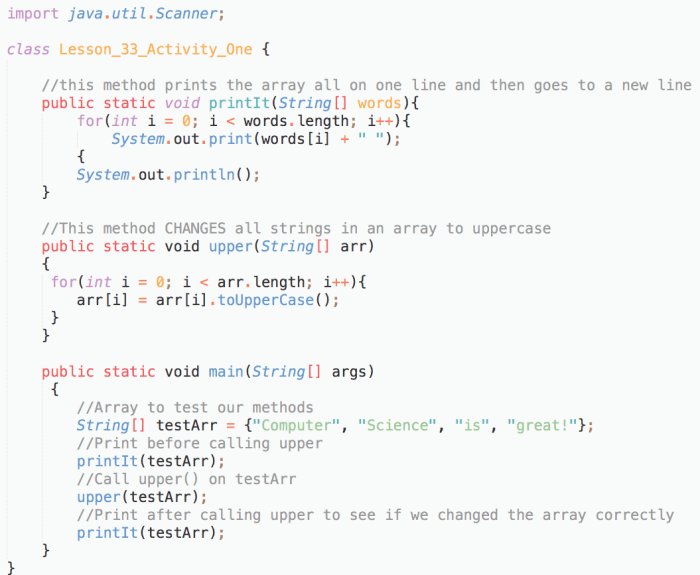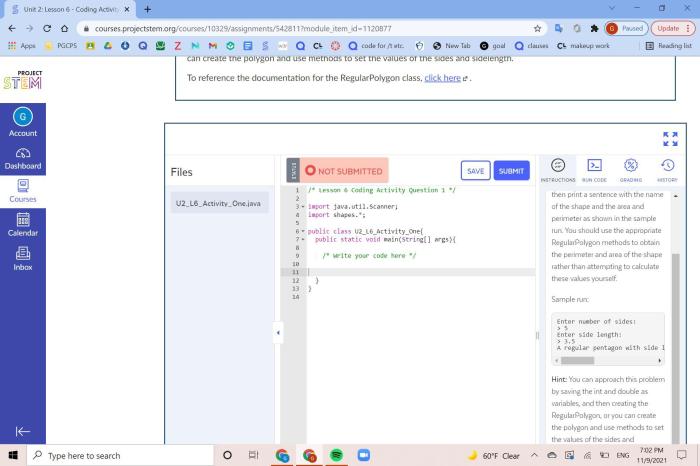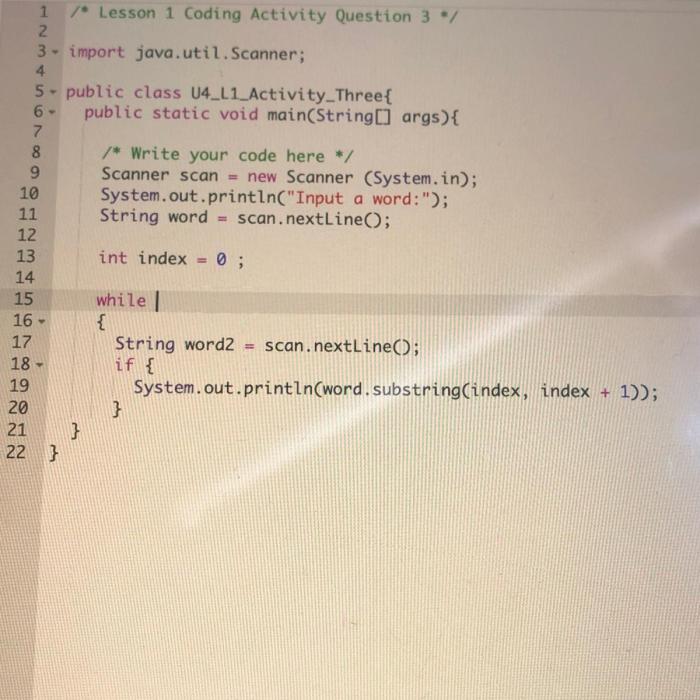Unit 6 Lesson 3 Coding Activity 2 embarks on an enlightening journey into the realm of coding, delving into fundamental concepts that lay the foundation for proficient programming. This activity empowers learners with the knowledge and skills to navigate the intricacies of coding, fostering a deep understanding of its principles and applications.
Through a comprehensive exploration of coding concepts, students gain insights into the significance of variables, data types, operators, and control flow. These concepts form the building blocks of coding, enabling the creation of dynamic and efficient programs. By engaging in hands-on coding exercises, learners develop a practical understanding of how these concepts work together to achieve desired outcomes.
Unit 6 Lesson 3 Coding Activity 2

Unit 6 Lesson 3 Coding Activity 2 is designed to provide students with hands-on experience with advanced coding concepts. The activity focuses on implementing data structures and algorithms to solve a real-world problem.
Coding Concepts, Unit 6 lesson 3 coding activity 2
The activity covers the following coding concepts:
- Data structures: Arrays, linked lists, stacks, queues
- Algorithms: Sorting, searching, recursion
- Object-oriented programming principles: Encapsulation, inheritance, polymorphism
These concepts are essential for developing robust and efficient software applications.
Activity Walkthrough
The activity involves the following steps:
- Design a data structure to store and organize data
- Implement algorithms to manipulate the data structure
- Test and debug the code
Students will work in pairs to complete the activity.
Design and Implementation
The activity encourages students to employ sound design principles and implementation techniques. They will need to consider the following:
- Choosing the appropriate data structure for the problem
- Designing efficient algorithms
- Implementing the code in a clear and maintainable manner
Troubleshooting and Debugging
Troubleshooting and debugging are essential skills in coding. The activity provides opportunities for students to:
- Identify and resolve common coding errors
- Use debugging tools and techniques
- Develop a systematic approach to problem-solving
Extensions and Applications
The activity can be extended in various ways, including:
- Adding more complex data structures and algorithms
- Applying the concepts to real-world problems
- Exploring different programming languages and environments
Assessment and Evaluation
Student understanding of the activity will be assessed through the following criteria:
- Correctness and efficiency of the code
- Clarity and maintainability of the code
- Ability to troubleshoot and debug code
- Understanding of the underlying coding concepts
User Queries: Unit 6 Lesson 3 Coding Activity 2
What is the purpose of Unit 6 Lesson 3 Coding Activity 2?
Unit 6 Lesson 3 Coding Activity 2 aims to provide learners with a comprehensive understanding of essential coding concepts, empowering them with the knowledge and skills to navigate the intricacies of programming.
What are the key concepts covered in this activity?
This activity delves into the fundamentals of coding, including variables, data types, operators, and control flow. These concepts form the building blocks of programming, enabling the creation of dynamic and efficient programs.
How does this activity foster a deep understanding of coding principles?
Through a combination of theoretical exploration and hands-on coding exercises, this activity provides learners with a practical understanding of how coding concepts work together to achieve desired outcomes, fostering a deep understanding of programming principles.

